Coody AirTent Hub 13 Setup Guide
The Coody AirTent Hub 13 is a flexible and inflatable hub, perfect for elevating your outdoor adventures. It seamlessly integrates with the upgraded Coody 8, 13.6 and Familia model airtents, while also serving as a roomy and luxurious standalone shelter for camping trips or family events.
Table of Contents
- How Does It Compare With Other tents?
- What Comes in the Package
- How to Setup the Coody AirTent Hub
- Detaching the Floor
- Docking the AirTent Hub with Other Coody Tents
- Deflating and Folding the Tent
- Care and Maintenance
- Repair and Patching the Airpoles
- On Condensation
- Manufacturer’s Notes
How Does It Compare With Other Tents?
Materials
The Coody AirTent Hub is built from two robust materials: the main tent uses 210gsm TC Fabric, while the floor is made from 550GSM PVC.

TC Fabric
TC (Polyester Cotton) fabric is a blend of 65% polyester and 35% cotton, combining the durability of polyester with the breathability of cotton. The Coody AirTent Hub features TC Fabric with a rating of 210gsm (grams per square meter), which measures the fabric's weight, thickness, and density. A higher GSM indicates a thicker and more durable material. This 210gsm rating makes the fabric tear-resistant and ideal for outdoor use, providing better breathability than fully synthetic fabrics, which helps reduce condensation inside the tent.

PVC
The AirTent Hub 13’s floor, lastly, is made from 550GSM PVC. This material makes the floor extremely resistant to wear and tear as well as preventing water from leaking into the interior.
Size & Dimensions
The Coody AirTent Hub 13 has a floor area of 138 square feet (141 x 141 inches). On the other hand, its peak height is 106 inches.


Should you utilize the whole floor area for shelter, the Coody AirTent Hub 13 can fit up to 4 individuals.

Applicable for All Seasons
The Coody AirTent Hub 13 stands out with its TC (terylene cotton) fabric, which offers exceptional insulation and breathability.

This premium material makes the tent ideal for four-season camping. Unlike the lighter Oxford fabric used in our Lite Series, the TC fabric provides a perfect balance of warmth and ventilation, making it an excellent choice for year-round campers. Designed with care, this tent offers superior comfort and protection for outdoor enthusiasts in any season.

Detachable Walls & Floor
Should you wish to, you can also detach the AirTent Hub’s floor, making it suitable for camping on snow or if you’re planning on using a wood stove inside the tent.

Docking with Other Tents
The most important feature of the AirTent Hub 13 is that you can use it to connect with other Coody tents! By using the Hub’s connector, you can attach a Coody 8, 13.6, or Familia to it–making it the perfect tent extension.
What Comes in the Package
The Coody AirTent Hub already comes with all the things you need to set up the tent conveniently. Below is a list of what’s included in the package.
- Air Tent Hub - 210gsm TC Fabric (Terylene Cotton)
- 1x Clear Windows - TPU
- 4x Mesh Windows
- Rainfly - 420D Oxford Fabric
- 1x AirTent Connector
- Manual Operated Air Pump
- Stainless Steel Stakes
- Guy Lines
- Carrying Bag for Tent
- Carrying Bag Accessories
How to Setup the Coody AirTent Hub
The Coody AirTent Hub is easy to set up by following these simple steps:

Step 1: Prepare Your Area
Select a flat, dry location for your tent setup. Ensure the ground is soft enough to easily insert the stakes.
Step 2: Spread out your tent and secure it with stakes
For extra security against the wind, the Coody AirTent Hub has numerous points along its perimeter where you can insert the included stakes. Make sure to peg your stakes and tent first before inflating the tent.

Step 3: Locate the Intake Valve
Find the intake valve at the front corner of the tent’s door. This is where you will attach the pump nozzle.

Step 4: Inflate
Attach the correct nozzle (3.6 cm diameter) to the intake valve, ensuring a tight fit. Inflate using the manual pump provided in the package—this will take about 80 pumps or under 6-8 minutes. Alternatively, you can use a rechargeable air pump.
Detaching the Floor
Should you wish to turn the Hub into an outdoor canopy, you can simply detach the floor by using the zippers. Like so:

Docking the AirTent Hub with Other Coody Tents
To connect the AirTent Hub with other Coody tents, you will need a Coody AirTent connector (included):

Then, please follow our step-by-step instructional video below:
You can purchase additional connectors at our store as well. Multiple connectors allow you to modularize your Coody tents. For example:

Coody Hub, Undocked

Single tent docking with a Coody 13.8.

Double tent docking with a Coody 13.8 and 8.
You can dock as many tents as you want, assuming you have enough connectors with you!
Note: the Coody Hub 13 cannot be docked with the Coody AirTent 5.8 and Aurora.
Deflating and Folding the Tent
When deflating your tent, slowly loosen the protective cap on the intake valve:

We do suggest not opening it up completely. Rather, a slow, steady trickle out of air is highly recommended to prevent your tent from collapsing abruptly.
Care and Maintenance
All of our tents are made from durable fabric. However, proper maintenance will help maintain its durability. That said, after camping, make sure to spray some mild soapy water on your tent and wipe it with a clean, soft sponge. Let it air dry, disassemble, and then place it back in its storage container.
To prevent mold growth, always store your tent completely dry in a well-ventilated area. Avoid storing it while wet, as this can lead to mold and moisture buildup. Keep the tent away from open flames or heat sources to avoid fire hazards. If storing for a long period, ensure the tent is thoroughly dry. Regularly inspect your tent for damage or wear and address any issues promptly to extend its lifespan.
Repair and Patching the Air Poles
While it's unlikely, accidents can happen, and your tent’s air poles might get damaged. If that occurs, your tent includes a patch kit to repair any punctures. Watch the video below to learn how.
On Condensation
Our Coody tents are made from TC fabric. It’s more breathable than regular polyester, maintaining indoor comfort year-round.. Unlike 100% cotton, it also offers better everyday waterproofing, blending comfort and functionality. The tent's large windows also improve ventilation. That is why our tents are popular among campers as they help minimize condensation, especially during winter.
However, the weather is unpredictable and sometimes some form of condensation might occur. This is not a defect; as condensation is a natural phenomenon. When this happens, we suggest that you open up your windows to allow air in.
Manufacturer’s Notes
- During the first 2-3 uses, it may go through a seasoning process, which is the initial period where the cotton fibers expand and contract.
- The frequency of light and sunlight will enhance the waterproofness.
- Inspect the tent thoroughly after purchase and test its use before the initial use.
- Keep in mind that any external damage or defect may not be covered under warranty.
- When using the tent indoors, ensure adequate ventilation to avoid the risk of mold.
- Ensure that the zippers do not get caught when closing the tent to avoid damage.
- The tent is not designed for use in extreme weather conditions; use caution during severe weather.
Have More Questions? Send us an email!
Browse Other Categories
-
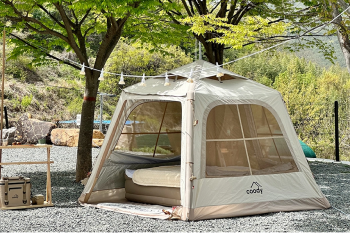
Coody AirTent Lite Series
Learn MoreSetup guides and more information about the Oliezi / Coody AirTent Lite Series.
-
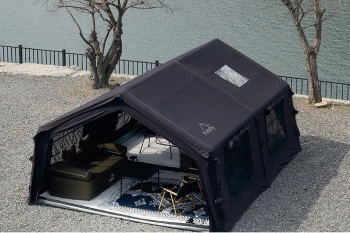
Coody AirTent Series
Learn MoreGuides and information about the Oliezi / Coody 5.3, 13.6, Familia and more.
-

-
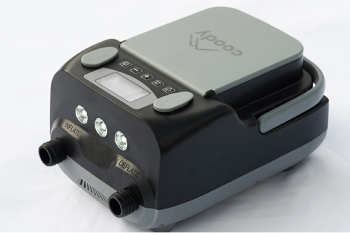
-
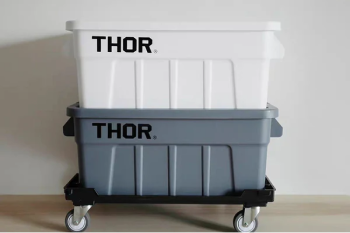
THOR Storage & Accessories
Learn MoreProduct information and guides for various THOR boxes and accessories.
-
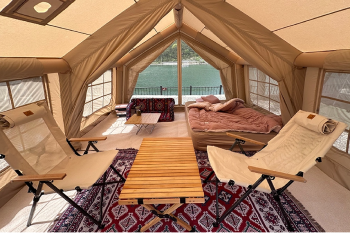
General Questions
Learn MoreQuestions on payment, delivery, returns and anything concerning shopping.






